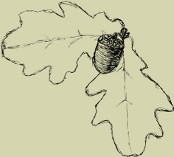42 41 40 39 38 37 36 35 34 33 32 31 30 29 28 27 26 25 24 23 22 21 20 19 18 17 16 15 14 13 12 11 10 9 8 7 6 5 4 3 2 1
Zeszyt 15 (1984)
Effect of UV radiation on the creep in tensioned microtome pine wood samples was investigated. Two series of tests has been carried out. In the first one samples were loaded to 40% of breaking force and simultaneously subjected to UV radiation from the start of testing. In the second series, samples were loaded with the same constant force but subjected to UV radiation only during the fixed period of creep when the creep rate is more or less constant. It was found that UV radiation decidedly intensifies the process of creep in samples subjected to radiation immediately after loading, first of all during radiation after the lapse of certain time of loading. In the second case 6-8 times higher rate of creep is observed in comparison with rate before exposure to UV radiation. Increased rates of creep due to UV radiation decreases gradually to the rate observed before exposure. This can be explained by the effect of superposition of mechanical and electromagnetic acting occurring in the time of exposure.
This kind of creep can by, therefore, regarded as a photomechanical creep.
Experimental determination of technical quality of pine sawtimber and middle dimension wood representing I and II site quality class of mixed fresh coniferous forest was the subject of reported study. Fundamental dependencies expressing the effect of age and site quality class of investigated forest stands on the technical quality of pine wood determined by conventional elements method, wood density and elasticity modulus at bending were established. Sawtimber and middle dimension wood 40-130 years of age constituted the experimental material. Obtained results were processed with the application of mathematical machine MERA-306 in the form of quadratic and cubic regression equation.
Occurrence of significant dependencies between the age and provenance of forest stands and technical quality of wood was ascertained. The share of clear wood elements, density and modulus of elasticity at bending were found to attain their maximum values at the determined age depending on site quality class and the type of forest stand. Maximum share of knot-free timber had been observed in stands of 120-130 years of age while the highest wood density occurred in forest stands of 105-115 years of age.
A linear relationship between the heat of combustion and chemical composition of wood was elaborated.
In the experimental part, extracted samples of pine and beech wood were treated in following processes: pulping in NaOH, acid hydrolysis in H2SO4, decay by Polystictus versicolor fungus and decay by Coniophora puteana fungus. In the decomposed wood, the chemical composition (substances soluble in 0.1n NaOH, lignin, holocellulose) and heat of combustion were determined.
The calculated and experimental heats of combustion were compared. It was confirmed that the obtained differences (mean ±2%) are contained within the range of errors of experimental determinations. The greater differences (−7.0%) were observed only in the case of strongly decayed wood by Coniophora puteana fungus.
The surface modification and subsurface damages induced by machining processes of wood like planing, circular sawing, abrasive planing and laser-machining are described using light and electron microscopic methods. The surface damages are clearly revealed by disturbance-free observations of the variously machined wood; characteristic patterns for the surface quality depending upon the sharpness of the working instruments as well as the wood characters are shown. On the whole this type of analysis of wood surfaces is essential to an evaluation of the surfaces produced in order to manipulate further operations like preservative and coating treatments, gluing etc.
This work presents the results of quantity determination of six phosphates and three preservatives. The amount of phosphates and preservatives was determined with weighting and color absorption spectroscopy methods in water standard solutions and in extracts of wood. Results of the analytical determinations were compatible to the weighting method.
Chemical structural changes occurring in pine pulp during ozonization were investigated using IR spectroscopic method's ATR technique. Greatest changes in band intensities were found for pulps treated with 2-3% of ozone.
Basing on the comparison of changes in band intensity at 1720-1730 cm−1 and ability of pulp to undergo reduction by NaBH4 it was concluded that the brightness of pulp depends mainly on transformation of carbonyl functional groups in lignin: α-arylic, quinonoid and β-arylic type.
It was stated that increase in brightness of ozonized pulp was resulted not only by the removal of main part of lignin but also by the transformation of lignin to soluble form.
The paper contains results of the laboratory investigations concerning production of active carbons from oak postfurfural lignocellulose impregnated with various zinc0chloride solutions. The following impregnation rations of zinc-chloride were used: 1.0, 0.5 and 0.25. Thermal treatment of the impregnated material was carried out with the use of a single-hearth furnace.
The following general conclusion may be drawn from this study:
— changes of the impregnation ratios in the range of the investigation are strongly related to the properties of obtained active carbons,
— total volume of capillaries and transient pores in carbons obtained decreases with the diminution of the impregnation ratio,
— the ash content increases with decrease of the impregnation ratio while the specific density of active carbons decreases,
— the lower is the impregnation ratio the greater is the effect of thermal treatment of the processed material on the properties of active carbons produced.
Research concerning the determination of rheological properties of water soluble carboxymethyl cellulose (3-7% solutions) with mean and highchain substituting degree, as well as properties of produced from this material carbonic pastes is reported in the paper. Rheological investigations were carried out at 293-363 K temperature and shering rate from 0.166 to 1330 S−1 using the rotary device Rheostat-2 type.
In order to obtain the description of rheological properties of investigated systems, generalizing mathematical Szulman's model was accepted. It was found on the basis of this model, that investigated solutions can be classified as belonging to a group of rheostatic non-Newtonian fluids without clearly defined flow limit. This assumption allowed for the acceptance — in regard to investigated carboxymethyl cellulose solutions — non-Newtonian rheological model suggested by Ostwald and de Waele and for the calculation of this model rheological parameters such as consistence ratio k and power index of characteristic flow η.
Effect of thermosetting phenol-formaldehyde resin Fenolit-43 cross-linking degree on the strength of glue lines in shearing and splitting was investigated. Samples prepared according to DIN 532 54 standard specification were used in testing. Degree of resin cross-linking in glue lines was determined using UV spectrophotometric method. Glue lines with resin cross-linked to different degree were tested, after pressing and conditioning, for their strength in dry state after 6 h, long boiling in water as well after subjecting them to accelerated aging cycles in accordance to requirements of modified WIAM method.
It was found that optimum results, expressed by relative strength of glue lines with resin cross-linking in the range of 87-92%, can be attained after 12 minutes time at 140°C temperature or 4-6 minutes at 160°C temperature. Pressing temperature of 120°C gave unsatisfactory results regardless of cross-linking degree, as far as water resistance of glue lines requested in the production of glues wood-based materials with phenolic resins is concerned. Inadequate resin cross-linking is detrimentally affecting the bond quality clearly decreasing the strength of glued joints after boiling in water and aging cycles of WIAM method.















 Pobierz PDF
Pobierz PDF